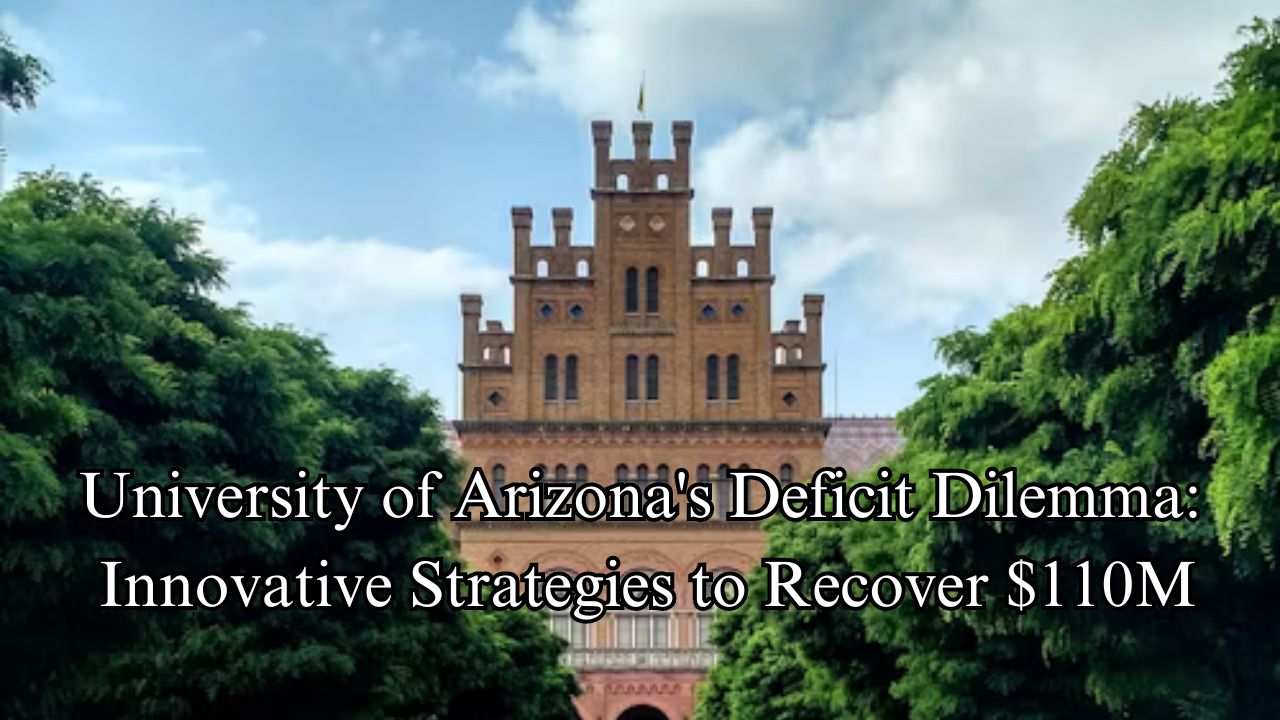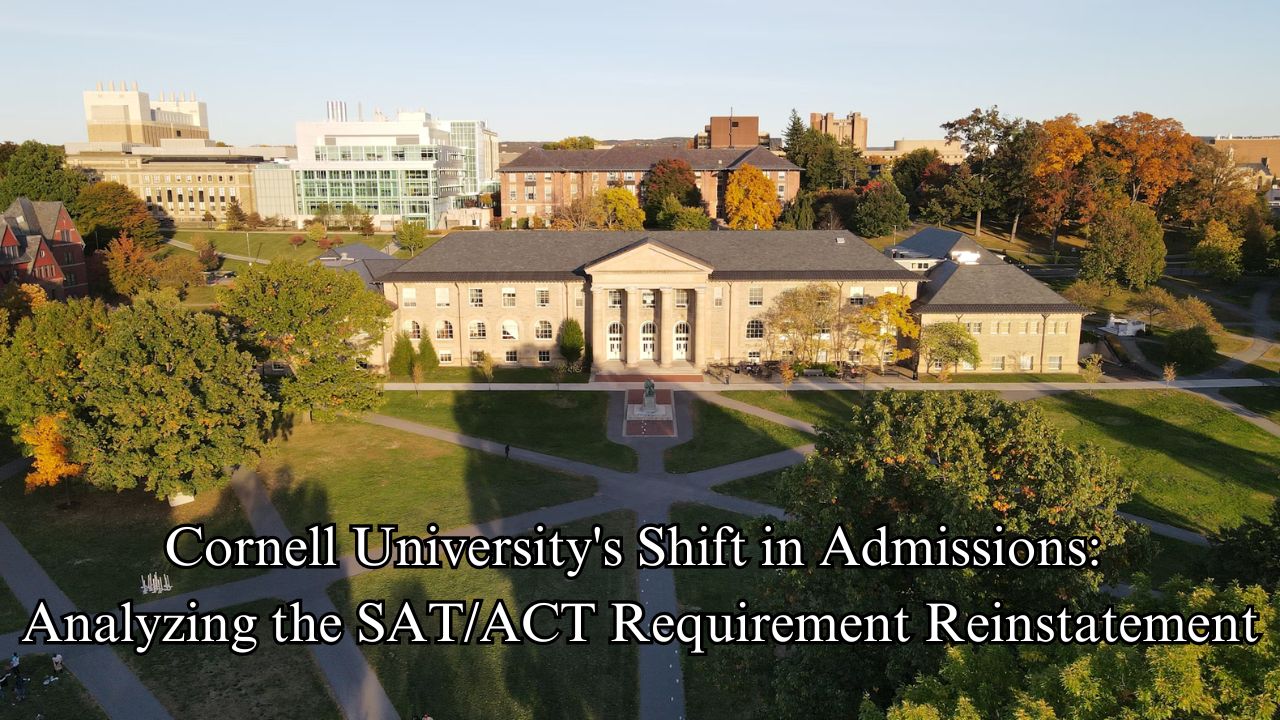University of Arizona’s Deficit Dilemma: Innovative Strategies to Recover $110M
The University of Arizona is navigating a precarious financial situation, confronting a significant structural deficit where expenses surpass revenues, a scenario indicative of a broader university of Arizona financial crisis 2. With an annual budget of approximately $2.7 billion, the university’s fiscal health has come under intense scrutiny as it grapples with a decline of $140 million in cash and investments over the past year, highlighting the vulnerability of its financial reserves amid rising inflation 1. This challenge is underscored by the fact that as of June 2023, the University of Arizona had $704.5 million in unrestricted cash and short-term investments, equating to 110 Days Cash on Hand—falling short of the ABOR-required minimum by 30 days 1.
Despite these pressing financial hurdles, the university maintains it is not facing an operational liquidity crisis, asserting its capacity to fulfill payroll and debt obligations 2. This signals a crucial juncture for the institution as it endeavors to navigate through this turbulence without compromising its operational integrity. The university’s situation is complex, involving accelerated spending from FY 2022 to FY 2023 and the impact of inflation, propelling it into a state of uncertainty that necessitates innovative fiscal strategies to bridge the deficit gap and stabilize its financial footing 1 2. This article will delve into the University of Arizona’s multifaceted approach to overcoming its $110M shortfall, exploring immediate and long-term measures, the impact on university programs and services, and the broader university community’s response.
Background of the Financial Crisis
Decentralization and Financial Oversight
- Decades of Decentralization: The University of Arizona’s financial crisis can be traced back to its longstanding decentralized budget and operations models, which led to significant oversight challenges and missed financial warning signs 2.
- Lack of Accurate Cost Accounting: The university did not adequately account for the true costs of running the institution, impacting its ability to make informed financial decisions 2.
- Impact of Decentralization on Resource Use: Extensive decentralization in core functions hindered the university’s ability to use resources strategically and efficiently, contributing to financial inefficiencies 2.
Strategic Investments and Revenue Shortfalls
- Investing in Excellence Initiatives: These initiatives included heavy investments in strategic plan initiatives, scholarships, and institutional-funded research, which, while beneficial, strained financial resources 2.
- Tuition Discounting: To attract and retain exceptional students, the university significantly discounted tuition, which led to revenue projections falling short 2.
External Pressures and Unanticipated Costs
- Pandemic and Inflation: The COVID-19 pandemic and rising inflation introduced significant unanticipated costs, exacerbating the financial strain 2.
- Athletics Department Challenges: The Department of Athletics faced increased costs and reduced revenue due to pandemic effects, deregulation of NCAA rules, and issues within the Pac-12 Conference 2.
Utilization of Financial Reserves
- Depleting Cash Reserves: To manage the deficit, the university utilized its reserves, leading to a shortage and a compromised Days Cash on Hand ratio, which fell below the ABOR-required minimum 12.
Structural Deficit and Budgeting Challenges
- Ongoing Budget Deficit: The university’s structural deficit was exacerbated by a lack of central budget and expenditure controls, leading to a projected $177 million annual shortfall and only 70 days cash on hand by the end of Fiscal Year 2024 34.
- Multiple Budget Models: Over the past decade, the use of three different budget models contributed to the financial crisis by fostering further decentralization and complicating financial oversight 2.
Spending and Financial Aid Policies
- Increased Operating Expenditures: Over the last ten years, operating expenditures grew by 67%, significantly impacting the financial health of the university 4.
- Financial Aid and Tuition Policies: The cost of educating each student was approximately $20,000, while in-state students paid an average of just $5,000, adding to the financial burden 4.
By examining these various factors, it becomes evident that the University of Arizona’s financial challenges are multifaceted, involving both internal administrative decisions and external economic pressures 234.
Immediate Measures to Control Spending
Immediate Measures to Control Spending
Centralization and Staffing Model Adjustments
- Human Resources Centralization: By centralizing Human Resources and adopting a new staffing model by July 1, the University of Arizona aims to control personnel costs, which constitute about 70% of the school’s deficit 1.
- New Budget Model Implementation: A new budget model is set to be launched by January 1, 2025, which includes reviewing faculty and staff workload to ensure appropriate staffing levels and avoid hidden costs 1.
Cost-Cutting and Efficiency Improvements
- Reduction in Administrative Costs: Measures have been taken to reduce administrative costs, centralize functions, and implement a new standard of financial reporting 5.
- Resource Rebalancing: Each college and division is tasked with rebalancing resource allocations and reducing costs 5.
- Athletics Department Modernization: This includes centralizing administrative functions, identifying operational efficiencies, resetting budgets from zero, and implementing hard caps on spending along with new revenue packages 5.
Expenditure Reductions and Operational Freezes
- Immediate Expenditure Cuts: The university has reduced spending in the latter half of FY 2024, implemented a hiring and compensation freeze, restricted purchasing, deferred nonessential capital projects, and frozen international travel for senior administrators 5.
- Budget Reduction Plans: Each unit within the university has been asked to present a plan reflecting operations with budget cuts of 5%, 10%, or 15% for fiscal year 2025 8.
Financial Aid and Tuition Adjustments
- Ending Guaranteed Tuition: Starting fall 2025, the guaranteed tuition program will be discontinued for all new students 9.
- Financial Aid Adjustments: The university plans to reduce financial aid for out-of-state students but will maintain need-based aid for Arizona residents and merit-based aid for current or accepted students 9.
Strategic Fiscal Adjustments
- Athletics Financial Recovery: The athletic department will increase ticket prices, maximize media rights contributions, and cut costs by centralizing administration functions 9.
- ABOR Corrective Action Plan: A corrective action plan must be submitted by December 15, detailing changes to rebuild cash levels and ensure proper financial controls 8.
These immediate measures are part of a broader strategy to control spending and address the financial challenges faced by the University of Arizona.
Long-Term Financial Strategies
Strategic Overview and Budget Adjustments
- Comprehensive Action Plan: The University of Arizona is focused on eliminating its structural deficit through a comprehensive action plan that includes restructuring administration, rightsizing budgets, and enhancing revenue streams 1.
- Administrative and Operational Overhaul: Centralizing administrative functions and implementing a new standard of financial reporting are critical steps aimed at improving operational efficiencies 1.
- Budget Model Revision: A new budget model is set to be introduced by January 1, 2025, which will involve reviewing faculty and staff workload to ensure optimal staffing and cost management 1.
Revenue Enhancement and Cost Reduction
- Revenue Generation Initiatives: The university expects to generate $18 million through program expansions, improved performance in auxiliary services, and efficiencies at the University of Arizona Global Campus 11.
- Budget Cuts and Adjustments: Significant budget cuts are planned, with administration/provost units seeing a 6.3% reduction, while health sciences will adjust by 6.2%, and colleges by 3.6%. Conversely, facilities will see a 2.5% increase, and safety a 9.2% increase 11.
Athletic Department and Global Campus Strategies
- Athletics Department Restructuring: The athletics department is undergoing a restructuring to balance its budget, including increasing ticket prices and maximizing media rights contributions 9.
- Global Campus Efficiency: Post-integration, the university is working to ensure the University of Arizona Global Campus operates more efficiently, which is expected to have a substantial positive financial impact 1.
Fiscal Health and Sustainability Goals
- Long-term Fiscal Targets: The University aims to balance its budget by January 1, 2026, with each college beginning fiscal 2025 with a balanced budget. This includes new protocols and administrative check-ins to ensure ongoing budget adherence 1 11.
- Strategic Budget Reviews: Individual reviews of all budget units are part of the strategy to maintain financial health, with a deadline set for April 15 for these reviews 12.
Impact on University Programs and Services
Budget Adjustments Across Colleges
College Budget Reductions
- College of Architecture, Planning, and Landscape Architecture: Budget cut by 2.5%, reducing from $11.5 million to $11.1 million 10.
- College of Education: Experiencing a 5% decrease, with funds shrinking from $25.1 million to $23.5 million 10.
- College of Engineering: Facing a 5% reduction, budget decreases from $61.4 million to $57.1 million 10.
- College of Humanities: Sees a 3.1% cut, with budget adjustments from $37.3 million to $35.9 million 10.
- W.A. Franke Honors College: Undergoes a 5% cut, adjusting from about $6 million to $5.4 million 10.
- iSchool: Budget reduced by 5%, from $9.9 million to $9.4 million 10.
- James E Rogers College of Law: Budget reduced from $24.7 million to $23 million 10.
- College of Social and Behavioral Sciences: Cuts of 2.6%, reducing from $72.2 million to $69.5 million 10.
- College of Science (and Steward): Receives a 5% cut, with budget adjustments from $162.6 million to $153.3 million 10.
- College of Applied Science and Technology: Budget cut by 5.1%, from $14.9 million to $13.8 million 10.
- College of Veterinary Medicine: Experiences a 4.8% budget cut, from $24.9 million to $23.4 million 10.
- College of Fine Arts (Presenting and Engagement): Budget to be reduced by 5.4%, from $36.6 million to $34.1 million 10.
- Agriculture, Life and Veterinary Sciences and Cooperative Extension: Anticipates a 6.4% cut, from $110 million to $101.9 million 10.
- Health Colleges: Budgets cut by 6.1%, from $312.7 million to $288.9 million 10.
Budget Increases
- Eller College of Management: Sees a budget increase of 2.3%, from $69.4 million to $70.2 million 10.
- James C Wyant College of Optical Sciences: Budget increases by 3%, from $16.3 million to $16.5 million 10.
These budget adjustments reflect the university’s strategic response to the financial crisis, prioritizing certain areas while reducing funding in others to manage the overall financial health of the institution 10.
Response from the University Community
Response from the University Community
1. Leadership Collaboration and Goals
University leadership, in partnership with the Arizona Board of Regents, is actively engaging with shared governance partners. They aim to inform solutions that will enable the University of Arizona to balance its budget by January 1, 2026, while minimizing impact on students, faculty, and staff 8.
2. Criticism from Faculty and Government
The administration faces significant scrutiny. Faculty members and Democratic Governor Katie Hobbs have criticized the university’s management, accusing them of various missteps and lacking a coherent plan to resolve the financial issues 6.
3. Community Outrage and Concerns
During a recent board meeting, the University of Arizona community, including students, faculty, and staff, voiced their outrage over the financial crisis. Concerns were particularly pointed towards the potential disproportionate impact on minority groups such as Black, brown, and queer students 6.
4. Calls for Accountability
There is a strong demand for accountability from the university’s senior leadership. Criticisms focus on the prioritization of athletics and failed investments over scholarship funding 6. Additionally, some university employees have expressed skepticism about the administration’s plans and have called for the resignation of UA President Robert Robbins 8.
5. Governor’s Expectations
Governor Hobbs has articulated clear expectations for greater transparency, accountability, and a distinct separation between the governance and operations of the university and the Arizona Board of Regents 8.
6. Administrative Acknowledgment
Interim CFO John Arnold has acknowledged the need for transparency, accuracy, and rebuilding trust as the university seeks viable solutions to its financial challenges 8.
7. Community and Staff Response
Staff and students have organized rallies demanding greater transparency and accountability from the university’s handling of the financial crisis. They urge President Robert Robbins and the Board of Regents to engage with the staff as human beings rather than merely workers 7.
8. Philanthropic Assistance and Scrutiny
Philanthropist John Arnold is assisting the University of Arizona with its financial restructuring. Meanwhile, the university’s accounting methods, particularly in cost allocation and financial aid distribution, are under close scrutiny 7.
Conclusion and Future Outlook
Through an analytical exploration of the University of Arizona’s current fiscal challenges, it’s apparent that the institution is enacting a detailed and multifaceted approach to address its $110 million deficit. Amid a climate of financial austerity, strategies spanning from centralized budgeting and staffing adjustments to strategic fiscal realignments and expenditure cuts reveal a comprehensive effort to mitigate the immediate fiscal crisis while preparing for a sustainable future. These measures, as they are implemented and evolve, are indicative of a significant transition towards financial health and operational efficiency, underscoring the university’s commitment to navigating through its financial turmoil without undermining its academic mission or operational integrity.
Nevertheless, the implications of these financial strategies extend beyond the ledger, touching the core of the university community from faculty and staff to students. As the University of Arizona endeavors to recalibrate its fiscal trajectory, the broader implications for program funding, tuition policies, and university services loom large, suggesting a period of adjustment and realignment for all stakeholders involved. This situation underscores the importance of transparent communication and collaborative governance in navigating the path ahead. Moving forward, the collective response from the university community and the potential for further research or action in addressing higher education financial crises will be pivotal in shaping the future of one of Arizona’s key academic institutions.
FAQs
Currently, there are no questions and answers provided from the “People Also Ask” section related to the University of Arizona’s Deficit Dilemma. If you have specific questions or need information on this topic, please feel free to ask.
Also Read :-
Cornell University’s Shift in Admissions: Analyzing the SAT/ACT Requirement Reinstatement
How Fintech Loans Are Revolutionizing the Loan Application Process
Find the Perfect QuickBooks Package for Your Small Business in 2024









